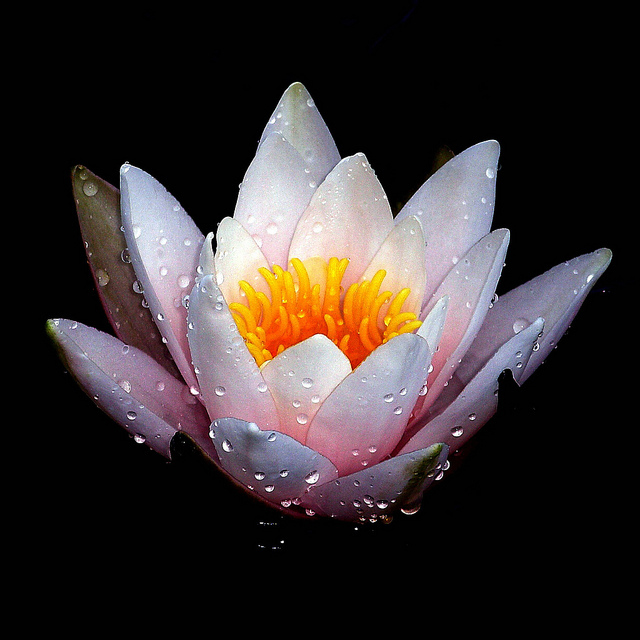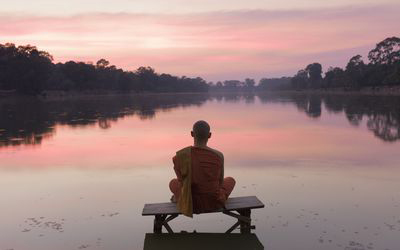Integral Health
The True Centre of Integration
One of the greatest values of yoga is the development of the capacity to view Nature or Prakṛti from the poise of the Self or the Puruṣa. Prakṛti is the manifestation that comprises the cosmos. It also includes that poise of the being which we study as personality.
The many poises of the Puruṣa
Puruṣa on the other hand is the Unmanifest Self who presides over the manifestation. Obviously, there are many poises of the Supreme Self who is the Supreme Puruṣa or Puruṣottama. The Supreme Puruṣa is equally present in poises that preside over the great planes of consciousness. There is the Manomaya Puruṣa or True Mental Self that presides over the mental plane of consciousness. There is the Pranomaya Puruṣa or True Vital Self that presides over the vital plane of consciousness that holds our Life-Energy and is the emotional repertoire. There is the Annomaya Puruṣa or true Physical Self that presides over the physical consciousness.
Indian spiritual tradition experientially demonstrated that one could be master of oneself if one identified with the status of the Puruṣa for then one could observe the movements of Prakṛti and exert a will to be detached from the disharmonious movements of Prakṛti. At a certain point, even Prakṛti can consent to help the Puruṣa consciousness to consolidate itself.
The Higher Nature and the Lower Nature
For practical purposes, except for a few yogis who opted solely for the Great Void, it was not possible to be completely de-linked from the manifestation, for terrestrial survival could not be maintained without the manifestation. The yogis also found a way to tackle with this problem. If one transcended the ego, then it could be easier to detach from Nature, as then one could differentiate between needs and desires. Desires are invariably linked to the ego, but needs are survival issues even when desires are surpassed. This poise of nature which one could interact with after transcending the ego was called Higher Nature or Parā Prakṛti in contrast to the lower Nature or aparā Prakṛti.
At the realm of the lower Nature, the manifestation had to maintain its infinite variation and uniqueness of each manifested unit, and this could only be accomplished if the multiplicity was unaware of its unitary origin. The manifestation was therefore in a way ignorant of the True all-pervading unity while the Puruṣa being the Unmanifest Self was always aware of unity as the sole reality. As long as this dichotomy prevailed, salvation could only be attained by shifting from the manifestation to the Unmanifest Self.
Sri Aurobindo wanted a divinisation of the manifestation itself so that it could reflect the underlying unity. It was a tall order. He explained that the manifestation, as we view it, was not final and there could an evolution of the manifest consciousness itself, unveiling higher powers and planes of consciousness till the highest creative consciousness was reached.
Element of divinity
But Prakṛti alone cannot divinise itself unless an element of divinity was incorporated in it to motivate it to progress. And this element of divinity would reflect the true unitary consciousness.
Sri Aurobindo explained that this could be possible by activating a secret that had been hinted at earlier in the Upaniṣads but had not been fully explored. The Unmanifest Self or Jivātman projects a portion of itself into the manifestation. This was the psychic being or Chaitya Puruṣa that is ordinarily veiled. It lies in the fourth-dimensional space but it can come forward to replace the ego and take the leadership of personal growth.
As the psychic being is a projection of the non-evolving Self in the evolutionary schemata, it also grows along the evolutionary trajectory. At its origin it is a divine spark of consciousness and as it evolves through successive lives, it becomes a conscious entity. Actually, it has to pass through many rebirths to become a conscious individuality.
The psychic being as the centre of integration
As long as we are unaware of the psychic being, the manifestation remains rudderless and chaotic or tied up to serve the ego in its various facades. The chaos happens as all the planes of consciousness are not in harmony when they are represented in our surface being of outer personality. In fact, they are intermingled at the outer being and truly one cannot identify them in their distinctive poises. Once we are aware of the psychic being, the planes of consciousness move from disharmony to harmony as they first shift from the outer being to the inner or subliminal being where they can be differentiated from one another. Then they can be integrated around the psychic being. Once the integration has taken place, the mind, vital and physical planes of consciousness become instruments of the psychic being. Until they become instruments of the psychic being, they cannot be divinised.
The true centre of integration of the being is not the ego but the psychic being. An individual, whose consciousness is integrated around the ego-surpassing soul-principle or psychic being, can be ready to ascend the higher echelons of consciousness.
While an experiential contact with the Unmanifest Self or Jivātman conveys the ever-expanding wideness of consciousness and dimension of impersonality, the contact with the psychic being brings an efflorescence of the most intense movements of joy, love, sweetness, peace, purity, devotion and beauty.
The psychic being carries the deepest imprints of life-memories which are tagged with divinity, memories which are pure and sublime, memories which are not influenced by the subconscious. These memory imprints that are stored in the psychic being outlive the lifespan of the individual to remain as memory transcripts in the cosmic consciousness and can influence future lives of one or more individuals in myriad ways. The psychic being therefore carries the missing link that connects lives through the vicissitudes of Time.
The psychic being as a centre of integration can take over the function of leading the being instead of the ego. It also carries the quintessence of health and well-being and is justifiably the harbinger of Integral Health. A person poised in the psychic consciousness can remain stable and happy in the midst of the most outwardly unfavourable circumstances that extend even to life-threatening illnesses and terminal states.
As the true centre of integration, the psychic being divinises human life.
How does the psychic being act?
Sri Aurobindo explains:
“It is the soul in us which turns always towards Truth, Good and Beauty, because it is by these things that itself grows in stature: the rest, their opposites, are a necessary part of experience, but have to be outgrown in the spiritual increase of the being. The fundamental psychic entity in us has the delight of life and all experience as part of the progressive manifestation of the spirit, but the very principle of its delight of life is to gather out of all contacts and happenings their secret divine sense and essence, a divine use and purpose so that by experience our mind and life may grow out of the Inconscience towards a supreme consciousness, out of the divisions of the Ignorance towards an integralising consciousness and knowledge. It is there for that and it pursues from life to life its ever-increasing upward tendency and insistence: the growth of the soul is a growth out of darkness into light, out of falsehood into truth, out of suffering into its own supreme and universal Ananda (1)”.
How can we work on our psychic being?
The Mother explains:
“Through interiorisation and concentration one has to enter into conscious contact with one’s psychic being. This psychic being always has an influence on the outer being, but that influence is almost always occult, neither seen nor perceived nor felt, save on truly exceptional occasions.
In order to strengthen the contact and aid, if possible, the development of the conscious psychic personality, one should, while concentrating, turn towards it, aspire to know it and feel it, open oneself to receive its influence, and take great care, each time that one receives an indication from it, to follow it very scrupulously and sincerely. To live in a great aspiration, to take care to become inwardly calm and remain so always as far as possible, to cultivate a perfect sincerity in all the activities of one’s being — these are the essential conditions for the growth of the psychic being (2)”.
References
1. Sri Aurobindo. Birth Centenary Library, Volume 18. Pondicherry: Sri Aurobindo Ashram Trust; 1970, p. 610.
2. The Mother. The Collected Works of the Mother, Volume 16. Cent ed. Pondicherry: Sri Aurobindo Ashram Trust; 1987, p. 224.
Share with us (Comments, contributions, opinions)
When reproducing this feature, please credit NAMAH, and give the byline. Please send us cuttings.




